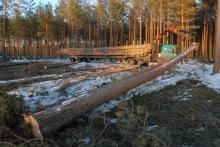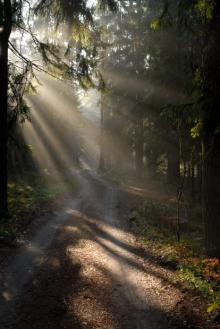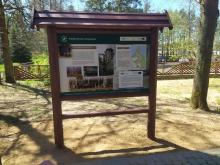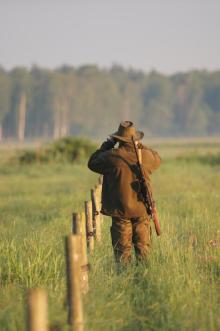 Asset Publisher
Asset Publisher
Polish forests
Poland is in the European lead, while concerning the area of all forests. They cover about 29,2 % of the country territory, and grow within the area of 9,1 million hectares. The overwhelming majority of the forests is state owned, of which almost 7,6 million hectares are managed by the State Forests National Forest Holding..
The number of Polish forest is still growing. The forestation rate of the country has increased from 21 % in 1945 to 29,2 % at the moment. Between 1995 and 2008, the forest area increased by 310 thousand ha. The basis for afforestation works is the "National Programme for Increasing the Forest Cover" (KPZL), assuming an increase of the forestation rate up to 30 % by 2020 and up to 33 % by 2050. Polish forests abound in flora, fauna and fungi. 65 % of the total number of animal species live there.
The forests grow in our country on poor soils, mainly because of the development of the agriculture in previous years. It influences the distribution of the types of the forest sites in Poland. Over 55 % of the forest areas is covered with coniferous forests. In other areas, there are forest sites, mainly the mixed ones. Their small part constitute alder and riparian forests – not more than 3 %.
In the years 1945 – 2011 the area of natural deciduous tree stands within the area of the State Forests National Forest Holding increased from 13 to 28,2 %.
Within the lowlands and uplands the most often occurring tee species is pine. It covers 64,3 % of the forest area of the State Forests National Forest Holding and 57,7 % of private and commune forests. In the mountains the predominant species is European spruce ( in the west) and European spruce with beech (in the east). Domination of pine is the result of carrying on sustainable forest management in the past. Once, the monocultures (crops or cultivations of one species) were the answer to the great demand of industry for wood. Such forests appeared to be quite fragile to climatic factors. They also were often the prey of pests' expansion.
In Polish forests, the share of other tree species, especially deciduous trees have been systematically increasing. The foresters have stepped aside from monocultures – that is why, they try to fit specific species of the forest stand to the natural stand, that would be proper for the given area. Thanks to that, in the years 1945 – 2011, the area of the deciduous tree stands within the lands of the State Forests National Forest Holding increased from 13 to 28,2 %. There occur more and more frequently the following tree species: oaks, ashes, maples, sycamore maples, elms, but also birches, beeches, alders, poplars, hornbeams, aspens, tilias and willows.
Our forests are the most often represented by the forest stands aged 40 to 80 years. The average age of the forest equals 60 years. More and more trees are of big size at the age over 80 years. Since the end of the Second World War, the forests' area has increased up to almost 1,85 million hectares.
Raport o stanie lasów w Polsce 2012
 Asset Publisher
Asset Publisher
Kolejni mieszkańcy zagrody adaptacyjnej dla żubrów
Kolejni mieszkańcy zagrody adaptacyjnej dla żubrów
 Fot. Marek Węgrzynowicz, Nadleśnictwo Augustów
Fot. Marek Węgrzynowicz, Nadleśnictwo Augustów
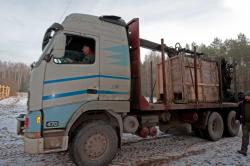 Fot. Marek Węgrzynowicz, Nadleśnictwo Augustów
Fot. Marek Węgrzynowicz, Nadleśnictwo Augustów
 Fot. Marek Węgrzynowicz, Nadleśnictwo Augustów
Fot. Marek Węgrzynowicz, Nadleśnictwo Augustów
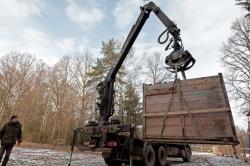 Fot. Marek Węgrzynowicz, Nadleśnictwo Augustów
Fot. Marek Węgrzynowicz, Nadleśnictwo Augustów
 Fot. Marek Węgrzynowicz, Nadleśnictwo Augustów
Fot. Marek Węgrzynowicz, Nadleśnictwo Augustów
 Fot. Marek Węgrzynowicz, Nadleśnictwo Augustów
Fot. Marek Węgrzynowicz, Nadleśnictwo Augustów
 Fot. Marek Węgrzynowicz, Nadleśnictwo Augustów
Fot. Marek Węgrzynowicz, Nadleśnictwo Augustów
 Fot. Marek Węgrzynowicz, Nadleśnictwo Augustów
Fot. Marek Węgrzynowicz, Nadleśnictwo Augustów
 Fot. Marek Węgrzynowicz, Nadleśnictwo Augustów
Fot. Marek Węgrzynowicz, Nadleśnictwo Augustów
 Fot. Marek Węgrzynowicz, Nadleśnictwo Augustów
Fot. Marek Węgrzynowicz, Nadleśnictwo Augustów
 Fot. Marek Węgrzynowicz, Nadleśnictwo Augustów
Fot. Marek Węgrzynowicz, Nadleśnictwo Augustów
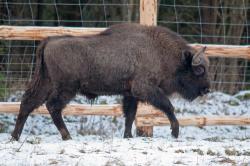 Fot. Marek Węgrzynowicz, Nadleśnictwo Augustów
Fot. Marek Węgrzynowicz, Nadleśnictwo Augustów
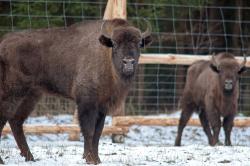 Fot. Marek Węgrzynowicz, Nadleśnictwo Augustów
Fot. Marek Węgrzynowicz, Nadleśnictwo Augustów
 Fot. Marek Węgrzynowicz, Nadleśnictwo Augustów
Fot. Marek Węgrzynowicz, Nadleśnictwo Augustów
13 lutego dwa kolejne żubry zostały przywiezione do zagrody adaptacyjnej na terenie Nadleśnictwa Augustów. Do wcześniej przywiezionej gromadki trafiła pięcioletnia krowa i dwuletni byczek.
Przywiezione osobniki stanowią tzw. grupę inicjalną, stanowiącą podstawę przyszłego stada. Skład grupy jest zależny od planowanego czasu przebywania żubrów w zagrodzie aklimatyzacyjnej. Nowo wsiedlane osobniki nie powinny być wypuszczane na wolność bezpośrednio po przywozie, gdyż na skutek stresu wywołanego transportem istnieje duże prawdopodobieństwo oddalania się ich od miejsc wypuszczenia na dużą odległość.
Oprócz podstawowego elementu opieki nad stadem wolnych żubrów, którym jest zapewnienie im wystarczającej ilości pokarmu (koszenie łąk, poletka zgryzowe, wodopoje) bardzo istotnym aspektem dla możliwości utrzymania żubrów w obrębie kompleksów leśnych, jest zapewnienie spokoju w ich ostojach. Obszary te powinny być wyraźnie oznakowane o bezwzględnym przestrzeganiu zakazu wstępu osób postronnych oraz prowadzenia prac leśnych.
Pomyślny rozwój populacji żubra w dużej mierze uzależniony jest od zdrowia poszczególnych osobników. Odłowione żubry zostały przebadane w kierunku gruźlicy bydła, enzootycznej białaczki bydła, i brucelozy bydła z wynikami ujemnymi. Badania przeprowadzono w PIWet-PIB Puławy. Żubry zostały również zbadane klinicznie i nie wykazywały objawów chorobowych mogących nasuwać podejrzenie choroby zakaźnej.
Odławianie żubrów może odbywać się za pomocą specjalnych urządzeń, tzw. odłowni lub klatek odłownych. Klatka odłowna powinna być ażurowa , zbudowana z drewnianych żerdzi i działać na zasadzie zapadni. Przy wyjściu takiej klatki znajduję się skrzynia transportowa, do której przemieszcza się żubra po odłowieniu. Innym sposobem jest zastosowanie indywidualnych boksów, gdzie podawana jest karma. Jeśli podczas odłowu żubry nie są niepokojone przez osoby postronne, bez problemu samodzielnie wchodzą do skrzyń transportowych. Żubry można przewozić transportem samochodowym, kolejowym i lotniczym. Transportowane są w pojedynczych skrzyniach odpowiadających wymiarom zwierząt. Podczas przewozu skrzynie ustawia się głową w kierunku jady lub bokiem, z możliwością dostępu obsłudze zarówno z przodu jak i z tyłu.
W czasie odłowu i transportu nie używa się uspokajających środków farmakologicznych.


 fot. Paweł Fabijański
fot. Paweł Fabijański
 fot. Paweł Fabijański
fot. Paweł Fabijański
 fot. Paweł Fabijański
fot. Paweł Fabijański

